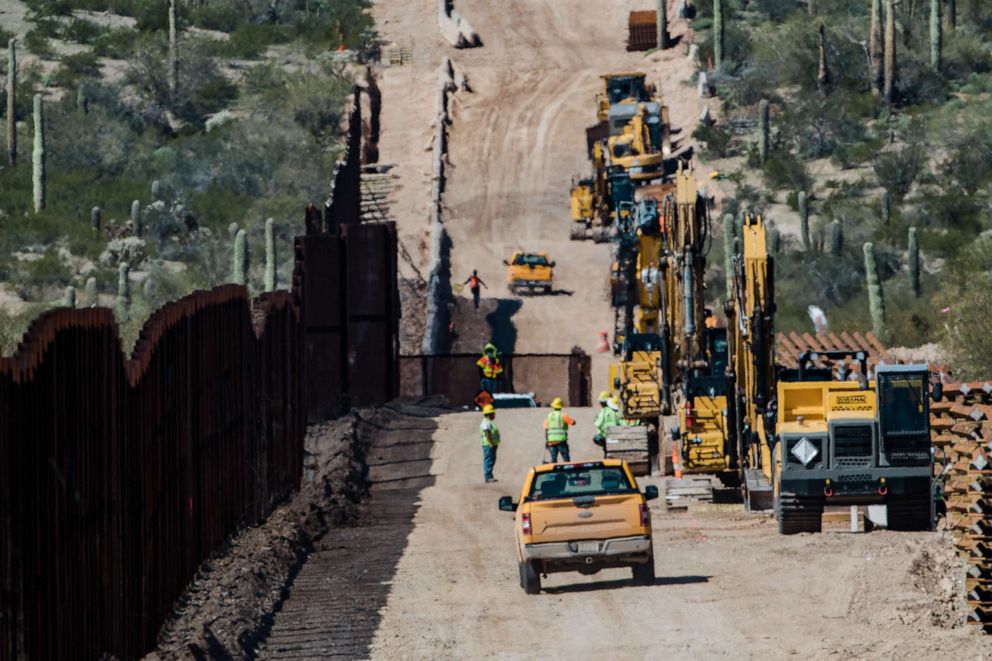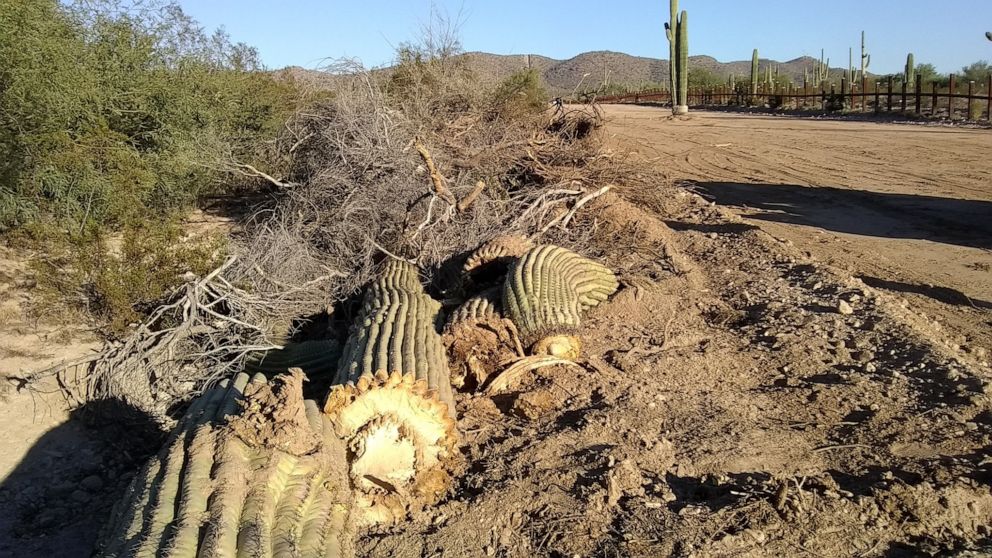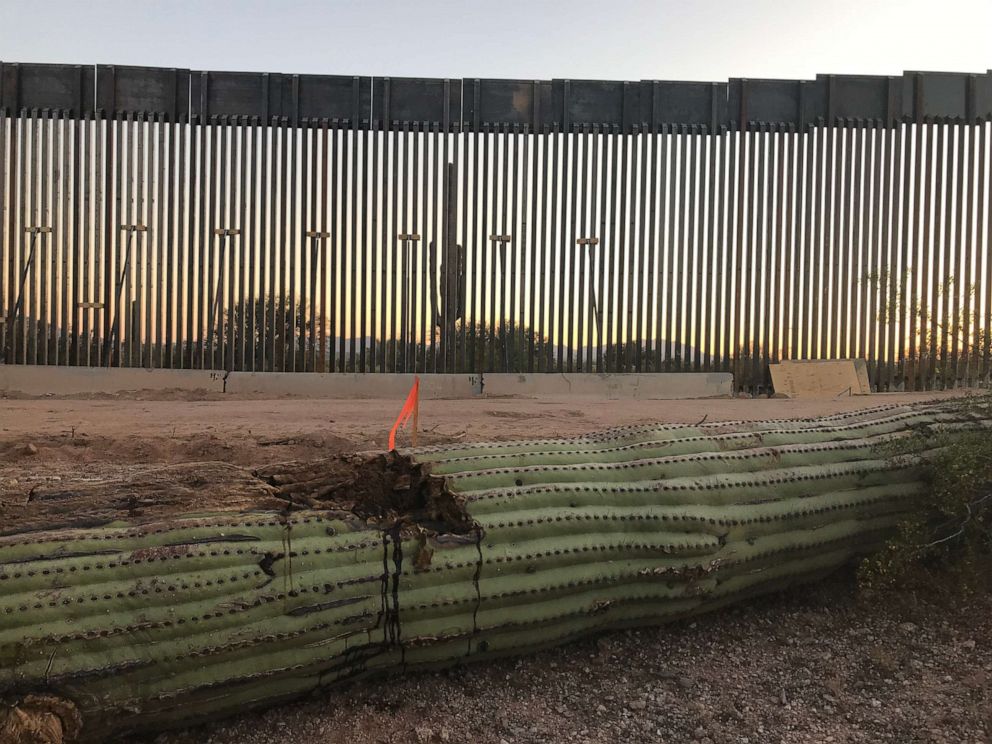Border wall construction plows through southwestern US undeterred by COVID-19
Homeland Security Chad Wolf visited the southern border this week.
Construction on President Donald Trump's border wall continues undeterred amid the coronavirus pandemic, and while progress extending fortifications along the border is minimal, the impact of upgraded steel barricades is felt by both Border Patrol agents and environmental advocates.
In meetings with U.S. Customs and Border Protection officials in the southwest, Secretary of Homeland Security Chad Wolf said the wall was more essential than ever in the fight against coronavirus.
"It allows them to move resources to other areas of the border that are very difficult to control," Wolf said told reporters Wednesday in Tucson, Arizona.

Approximately 50 miles of barriers have been built since the end of February, when the first deaths linked to the coronavirus were reported in the U.S. That figure accounts for more than a quarter of all border wall construction completed under the Trump presidency, according to an ABC News review of federal government data.
Trump has promised more than 500 miles of border wall by early next year. About $15 billion has been allocated by the administration to hit the president's border wall goal, nearly double the $8.3 billion in the initial coronavirus emergency response act.
Nearly everything built along the southern border so far has replaced smaller, older structures. CBP data released in the past week shows just three miles of wall have been built where no barriers previously existed, with lawsuits from private property owners delaying the federal land acquisition process.
Border Patrol agents and environmental activists alike say the replacements have made a significant impact in southern Arizona, where Wolf visited on Tuesday.

Patrol roads, lighting systems and motion detection technology are all part of what officials routinely describe as a complete security "system." The barriers themselves stretch 18- to 30-feet-high and are anchored deeper into the ground than older barriers designed to stop vehicles.
Federal government filings show the list of environmental law waivers authorized under Wolf to make way for construction include parts of the Clean Water Act and the Endangered Species Act.
Bulldozers and other heavy machinery have been brought up to the edge of the Oregon Pipe National Monument outside Tucson, where crews have also detonated bedrock to lay the barrier's foundation.
Crews have worked to remove cactus and other plant life near the international wildlife preserve to make way for access roads which Border Patrol say are needed to enhance security.
The Army Corps of Engineers in February conducted a series of controlled blasts along a sacred Native American heritage site known as Monument Hill.

The work has drawn the ire of local community advocates who accuse Wolf of ignoring the irreversible damage that could be done to the Sonoran Desert landscape.
"Wolf is responsible for ramming border walls into our communities, bulldozing our state's beloved saguaro cactuses and demolishing indigenous sacred sites," said Laiken Jordahl, an environmental advocate based in Tucson. "Now he's wasting time with a dog-and-pony show while people are suffering and dying of COVID-19 in his detention facilities."
Crews in the Tucson region have more than doubled the amount of slatted steel barriers since the early days of the pandemic with about 17 miles built along the border line in the area, according to two Customs and Border Protection officials.
"I think the administration has been very clear on this front, which is border security is national security and Homeland Security, and so we're going to secure that border every way we can," Secretary Wolf said before continuing on to California for more Border Patrol meetings.
What to know about the coronavirus:
- How it started and how to protect yourself: Coronavirus explained
- What to do if you have symptoms: Coronavirus symptoms
- Tracking the spread in the U.S. and worldwide: Coronavirus map
Tune into ABC at 1 p.m. ET and ABC News Live at 4 p.m. ET every weekday for special coverage of the novel coronavirus with the full ABC News team, including the latest news, context and analysis.



